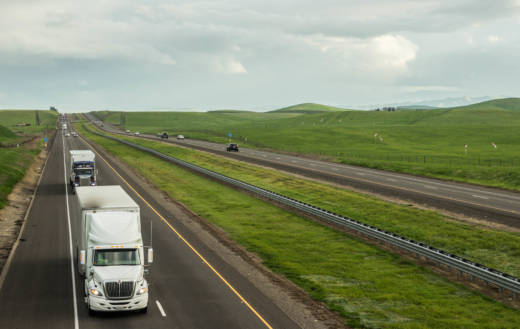The plan includes: $100 billion to state and local agencies for projects ranging from passenger rail to Superfund cleanup projects: $50 billion for rural infrastructure -- projects to "facilitate freight movement, improve access to reliable and affordable transportation options and enhance health and safety for residents and businesses"; $20 billion for "transformative projects" -- "ambitious, exploratory, and ground-breaking project ideas that have significantly more risk than standard infrastructure projects, but offer a much larger reward profile"; and $30 billion for a variety of existing infrastructure financing programs.
How might state and local funding work? As it happens, the White House has signaled it likes recent initiatives by California voters to step up and pay their own way.
As the Los Angeles Times notes, an unnamed administration official pointed to Los Angeles County's Measure M, a 2016 sales-tax increase, as a model:
A senior administration official, speaking in advance of Monday's release of the White House's "infrastructure principles," singled out for praise a Los Angeles County sales-tax increase that was a top initiative of Mayor Eric Garcetti. ...
... "When we're thinking of revenues at the state and local level ... a good case study would be Measure M in Los Angeles," the administration official said, noting approvingly that the ballot-approved tax increase is "the ultimate sustainable source of revenue for projects."
Measure M, which passed with a 71 percent "yes" vote, imposed a half-cent sales-tax increase that will raise an estimated $120 billion for transit projects over the next 40 years. Among many other projects, the tax is funding L.A. Metro's Purple Line extension to Westwood, a light-rail extension to Los Angeles International Airport and bridge retrofits throughout the county.
Bay Area voters have passed a long series of smaller tax, bond and toll increase measures to fund highway, bridge and transit infrastructure, including last year's Measure RR, a parcel tax that provides $3.5 billion in bond funding for BART.
In June, voters in the region's nine counties will be asked to raise tolls on state-owned bridges to raise $4.5 billion for road and transit projects. And Bay Area business groups and transportation advocates are working on a much bigger tax measure, which could appear on the ballot as early as 2020, to raise as much as $100 billion for big-ticket projects such as building a new BART/rail crossing.
The other major thrust of the White House plan -- to ensure projects move through environmental and other regulatory reviews in a maximum of 24 months -- promises to spark a renewed fight between those who advocate strong habitat and species protections and pro-development, pro-business forces. Via the New York Times:
"... Progressive groups and public interest organizations rushed to condemn the plan on Sunday, arguing that Mr. Trump was trying to gut environmental rules under the guise of an infrastructure initiative.
“President Trump’s infrastructure proposal is a disaster,” Shelley Poticha, the managing director of the Healthy People & Thriving Communities Program at the Natural Resources Defense Council, said in a statement. “It fails to offer the investment needed to bring our country into the 21st century. Even worse, his plan includes an unacceptable corporate giveaway by truncating environmental reviews.”
Business groups, however, broadly praised the president’s forthcoming proposal, saying it represents a long overdue investment that would provide a boost to American companies.
“In calling for a substantial, $1.5 trillion investment, President Trump is providing the leadership we have desperately needed to reclaim our rightful place as global leader on true 21st-century infrastructure,” said Jay Timmons, the president and chief executive of the National Association of Manufacturers. “There is no excuse for inaction, and manufacturers are committed to ensuring that America seizes this opportunity.”
One last note, via NPR: The plan unveiled Monday fails to suggest a solution for one of the nation's most critical infrastructure funding issues:
The president's plan does not address a huge yearly shortfall in the federal Highway Trust Fund, which is funded by the federal gasoline tax. That tax of 18.4 cents a gallon for unleaded, 24.4 cents a gallon for diesel, hasn't been raised in 25 years and because of improvements in fuel efficiency and inflation, it raises less money now than it did when last raised in 1993. So Congress is already using deficit spending to pay for some transportation infrastructure needs funded by existing programs.
